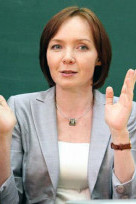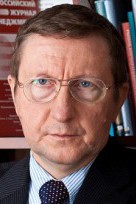Comments
Given that the debt crisis of the West has now critically destabilised the global dollar reserve standard that is a legacy of the Bretton Woods monetary system, it is inevitable that, in the transition back to a sustainable monetary order, gold will be at least partially if not fully remonetised to restore trust in international monetary relations. As a result, it is highly likely that the world will in some way reinstate a formal gold standard for settling international balance of payments.
In the context of challenging world economic situation and deep economic crisis in the eurozone, the Central and Eastern European countries have shown positive economic performance. Over the last10 years the growth rate of economies in Central and Eastern Europe regularly exceed the growth rate of the world economy. This shows good potential for economic growth and investment prospects. However, the crisis has proved that strong dependence on outside sources of funding can do much harm to economies. It is necessary to create stable domestic debt markets and diversify investment flows for a more sustainable development. The intensification of intra-regional investment flows, mutually beneficial economic cooperation and exchange of experience between the Central and Eastern European countries might become stabilizing factors in the face of precarious world economy.
According to the United Nations Conference on Trade and Development (UNCTAD), the inflow of investments has decreased by 18% over the past year. When it comes to the attraction of foreign direct investments, for the first time ever developing countries are outstripping developed countries. What factors will determine the position of Central and Eastern European countries on the world economy map? What is the potential for development from the expert’s point of view? Will Russia be able to maintain its leadership in attracting investments in the region by developing a non-energy sector? These are the main issues open for discussion at the conference.
The globalization of economies and the increased integration of capital markets are prompting institutional investors to rethink their equity investment process and adopt a global equity approach in asset allocation. In particular, Emerging Markets such as in Central and Eastern Europe play an increasingly important role in the global economy and in the asset allocation process of institutional investors. This trend towards global investing can represent an important growth driver for capital markets across the CEE region. However, with increasing flows of foreign capital into these markets comes increasing expectations by investors for market openness, transparency and efficiency.
The Central and Eastern European Investment Conference will provide a very good opportunity to discuss various issues related to this process. In particular, it will help the investors’ representatives to get answers to their questions related to the protection of their investments, define the most promising areas and expected rates of return. The Conference will explain how the use of attracted investments will be arranged, what models are offered and what factors will ensure sustainability. The conference will become a platform for a serious professional dialogue, which is particularly important in dealing with the problems of global economy.
The Central and East European Investment Conference seeks to highlight the strong potential for intra-regional investment. Although rotating the Conference between different countries will focus on the host country, the Conference will retain a trans-regional program content. The Conference is co-organised by the CFA Societies in each of the participating countries. The Conference will at the same time be investment oriented, and independent of the commercial biases associated with similar conferences run by single large institutions.
2nd CEE Investment Conference is a unique international forum, which considers Russia and its regional neighbours in the context of a larger region. This is an unusual viewpoint, which will allow investors to discover a new array of investment opportunities, and will strengthen positions of the entire region as the target for international investments and capital flows.









Alexander Chachava, President of LETA Group, Managing partner at LETA Capital
The level of Eastern European innovative startups has grown significantly over the last 10 years. Smaller sizes of domestic markets are forcing Eastern European startups to be focused on international expansion and wider markets. So the best projects have a priori higher requirements for critical issues and innovation, than on average in Silicon Valley. A small number of innovative startups in Eastern Europe is still a major problem, but we are facing an increase in the number of such projects in the last 2 years, so the situation is gradually improving. Welcome to Eastern Europe for a billion startup project!